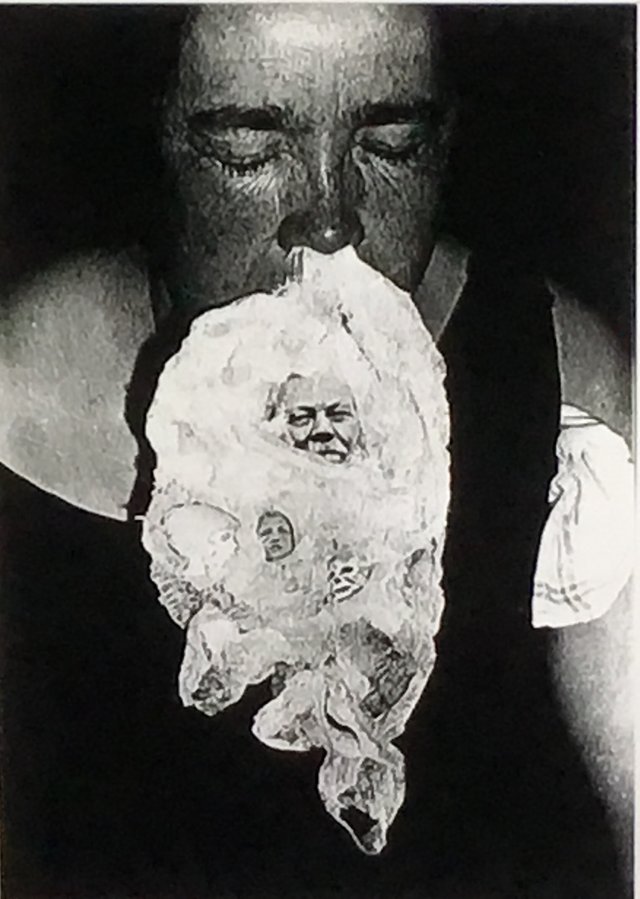EXTROPIA’S CURIOUS SCIENCE
“Ectoplasm”
Welcome to my occasional series dedicated to the fringes of science.
In 1929 a respected Munich Psychiatrist and Physician called Baron Albert Von Schrenck Notzing began studying a medium known as ‘Ezra C’ (real name Martha Bermuda). Around the end of the 19th century, the Baron had been conducting hypnotic experiments and had become fascinated with mediumistic phenomena. In particular, he was drawn to ‘mediumistic teleplastics’ and wrote a book on the subject, ‘The Phenomena of Materialisation’.
‘Mediumistic teleplastics’ would become more popularly known as ectoplasm. The name came from the Greek, ‘exteriorised substance’ or ‘formed outside of the body’.
The apparent ability to manifest ectoplasm could be found in demonstrations of medium’s abilities during the late 19th and early 20th centuries. Ectoplasm would emerge from every orifice on the medium’s body, at first in the form of drops or thin thread, but then growing into shapes, perhaps humanlike, perhaps animal, or maybe entirely abstract. Whatever ectoplasm was, it was said to be extremely sensitive to both light and touch.

The sceptical will no doubt highlight that this meant such manifestations typically happened in darkened rooms, making it easier to hide any trickery. Indeed, when mediums agreed to undertake more rigorous, scientific studies, many supposed manifestations were exposed as frauds. For example, in 1931 a Scottish medium called Helen Duncan was examined by one Henry Price, who found the supposed paranormal substance to be cheesecloth, rubber gloves and egg white. These findings were written up in ‘Regurgitation and the Duncan Method’, which sums up the less than supernatural way in which this ‘ectoplasm’ was produced.
By the way, Duncan was the last person in the UK to be tried for witchcraft, when in 1944 she supposedly revealed Naval secrets during a seance.
I should point out that, although many alleged cases of materialisation were exposed as frauds, a few did manage to convince paranormal researchers. Madame Beraud, mentioned at the start, was one such case.
As to whether that was down to it being a genuine example of materialisation or just ‘Eva C’ being able to trick the researchers, well, you can make up your own minds…
REFERENCES
“Far Out” by Mark Pilkington